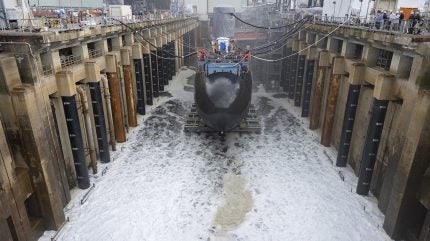
The US Navy has taken a step forward with the launch of its newest Virginia-class fast attack submarine, the future USS IDAHO (SSN 799).
On August 6, 2024, this vessel made its inaugural journey from the General Dynamics Electric Boat shipyard into the Thames River, marking the beginning of its final preparations for service.
The event was a ceremonial “float off,” the launch was a milestone in a broader effort to maintain and expand the United States’ undersea warfare capabilities amid growing global naval competition.
GlobalData’s intelligence on the US defence market highlights that the Virginia class is the US Navy’s latest class of nuclear-powered attack submarines (SSN), scheduled to replace the Los Angeles-class attack submarine.
The USS IDAHO is the 26th vessel of its class and is equipped with stealth features, surveillance tools, and adaptable systems. These capabilities are critical as the US faces increasingly complex security challenges worldwide.
The US Navy plans to acquire up to 66 Virginia-class submarines, with the most recent contract awarding ten more submarines, according to GlobalData’s “The Global Submarine Market 2023-2033” report.
“Today’s launch is a testament to the strong collaboration the Navy has with its shipbuilding partners,” remarked Capt: Mike Hollenbach, Virginia Class Submarine program manager.
The USS IDAHO‘s journey from conception to launch has been long. Construction commenced in 2017, and the submarine was officially christened on March 16, 2024, at General Dynamics Electric Boat in Groton, Connecticut.
Its construction embodies the latest modular design and open architecture, allowing for updates and integration of new technologies over its operational life.
This is the fifth US Navy ship to bear the name Idaho.
The USS IDAHO will still undergo final outfitting, testing, and crew certification.
General Dynamics Electric Boat (GDEB) recently secured a $1.3bn contract modification to deliver long lead-time materials for the Virginia-class Block VI submarine programme. This contract supports the stability of the naval industrial base, with work expected to conclude by September 2035. Block VI will build on previous iterations, potentially introducing new capabilities like seabed warfare.







